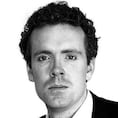Cycling through central Berlin these days is a hazardous business. East of the Brandenburg Gate, what was once the Unter den Linden boulevard is now a construction site slalom. Reach the end in one piece and you may yet fall off your bike in shock.
Like a ghost of the past the former palace of Prussian kings and German kaisers, dynamited in 1950, has risen again from Berlin’s sandy soil.
The concrete shell is complete and the brick-stucco cladding, last seen in history books, is reappearing – making tangible what to date was an abstract endeavour.
As the 2019 completion date nears, two urgent questions remain unanswered: what will go in the palace, and what should go around it?
Given that the rebuilding campaign has been running for 25 years – and the replica’s €600 million price tag – you’d think the question of the palace’s function and contents would be long settled. But this is Berlin.
Officially the palace – with three historical facades and one modern side – is not a palace at all but the “Humboldt Forum”. The forum describes itself as a centre for art, culture, science and education with a “historical aura”.
Remarkable collections
Part of the forum will be the new home of Berlin’s Ethnological and Asian Museums, bringing into the city centre remarkable collections previously located off the tourist track in the western Dahlem neighbourhood.
There will be a library and some public spaces. After that, however, things get very fuzzy very quickly. The Humboldt University is to have some sort of science museum while the city of Berlin is to have a . . . well Berlin has thrown out its original concept and wants something else – we don’t know what yet – that will require replanning.
With alarm bells ringing, building site manager Manfred Rettig resigned. On his watch the construction project ran to schedule. Given Berlin's indecision, he feared the palace could yet go the way of the city's notorious new airport – five years overdue, still not open and wildly over-budget because of political indecision, belated changes and negligible oversight.
Another looming problem at the Humboldt Forum is the number of cooks in the kitchen, from the heads of the private initiative that initiated the project to a coterie of politicians and civil servants in Berlin city and federal ministries. Though construction is well under way, a trio of curators was appointed just last year to knock some shape into the forum’s still elusive concept.
One of the directors, former British Museum chief Neil MacGregor*, will have his hands full wrestling with the politics, egos and competing demands of the chorus of his fellow directors, curators, ministers and managers.
Field of dreams
Given all the uncertainties hanging over Berlin’s concrete field of dreams, a second debate has sprung up over what the palace environs should look like. Across the river Spree from the building site is an urban wasteland. This is the centre of Berlin but Berliners never come here. Apart from an occasional lost tourist, the oversized statues of
Karl Marx
and
Friedrich Engels
have their eponymous, sprawling plaza to themselves.
Before Allied bombs and Communist bulldozers flattened everything here, this district between the palace and Alexanderplatz was a densely populated network of streets and buildings in Mitte, Berlin’s historical core.
To remind Berliners of what their city once looked like, Benedikt Goebel, an architect and urban researcher, has collaborated with photographer Lutz Mauersberger on a book that juxtaposes prewar aerial images of Berlin-Mitte with the same views today.
The then-and-now photographs are a fascinating X-ray of Berlin’s heart, excised twice over: first from the cityscape and then from popular memory. Of the 1,200 buildings that once filled this stretch of Mitte in 1933, just 85 exist today. Most streets were erased by East German planners, creating an urban black hole.
To return life to the area Goebel is calling on city fathers to reconfigure the space with reference to the older city plans. Opponents have attacked his plan as regressive and restorative, but Goebel takes issue with being lumped in with the conservative Prussia fans behind the palace replica.
“They are pushing an ideological project with the palace. We are pushing an aesthetic city planning project,” he says. “We want a debate about how Mitte used to work and why it doesn’t work today. Portraying this as an attempt to turn back the political clock is absurd – but that’s what happening in Berlin, where any reference to the past is forbidden.”
* This article was amended on February 24th at 10am to correct an error.

















